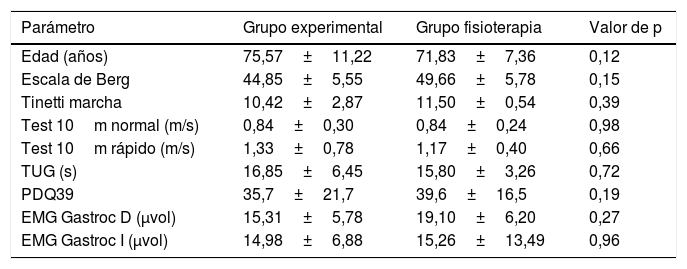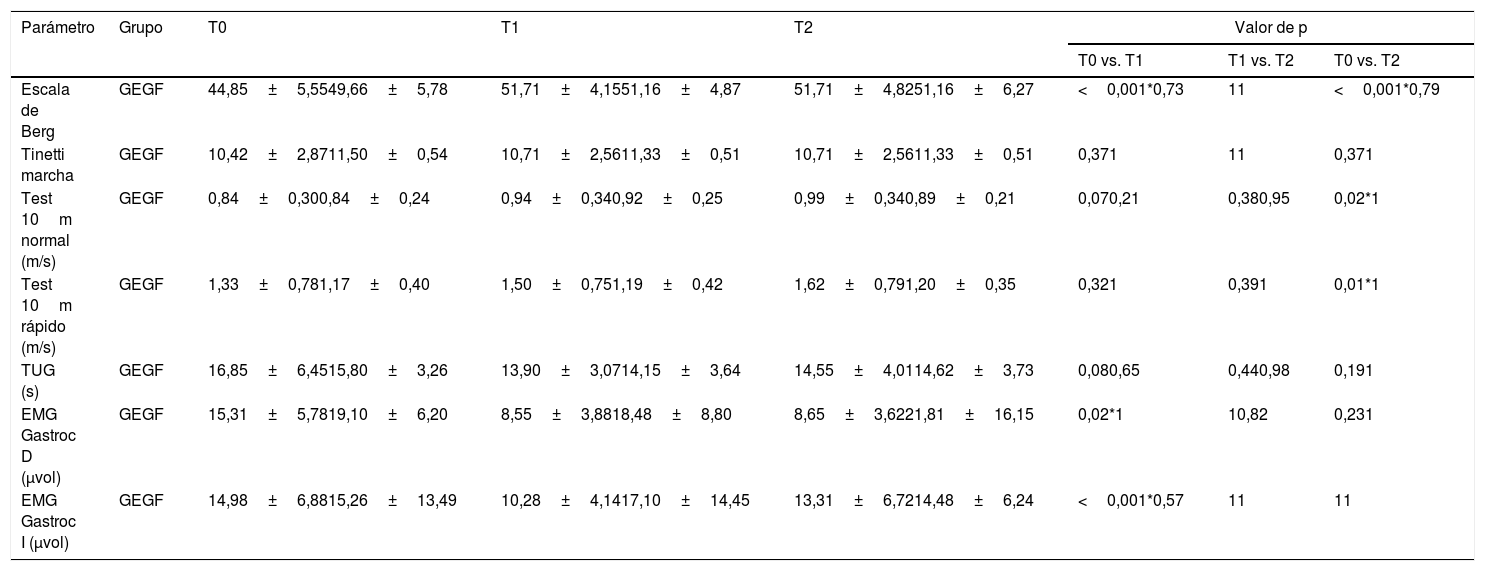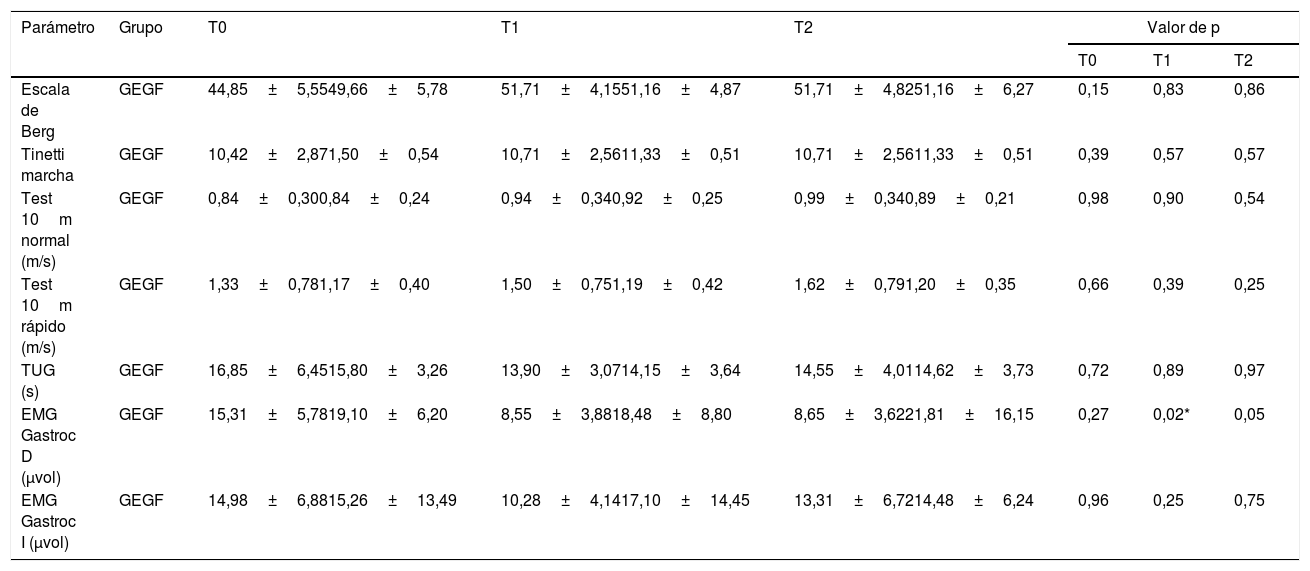La enfermedad de Parkinson es un proceso neurodegenerativo progresivo e irreversible caracterizado por temblor de reposo, bradicinesia, rigidez y alteraciones del control postural, del equilibrio y de la marcha. El vendaje neuromuscular tiene un efecto de estimulación somatosensorial, con beneficios en el control postural.
MétodoEstudio piloto con grupo de intervención fisioterapia y grupo experimental (se añade el vendaje neuromuscular) en gastrocnemios y paravertebrales lumbares. Variables: escala de Berg, escala de Tinetti (subescala marcha), test 10m, TUG test, PDQ-39 y registro electromiográfico de gastrocnemios. Se realizaron 3 mediciones: T0 (basal), T1 (2 días postintervención) y T2 (a la semana postintervención); el PDQ-39 se administró en T0 y al mes postintervención.
ResultadosTrece voluntarios (estadio III Hoehn y Yahr) fueron seleccionados tras aplicar los criterios de inclusión (9 mujeres y 4 varones). N=7 grupo experimental y N=6 grupo fisioterapia. El contraste intra-grupos mostró mejoras significativas a favor del grupo experimental en la escala de Berg (T1 y T2), la prueba de 10m (T2) y en la menor actividad muscular media de gastrocnemios (T1). El contraste inter-grupos evidenció, únicamente, diferencias en el registro electromiográfico de la contracción muscular del miembro inferior derecho, tras la aplicación del vendaje neuromuscular, en T1.
ConclusionesLa aplicación del vendaje neuromuscular en los erectores del raquis lumbar y los gastrocnemios de manera bilateral, podría mejorar la marcha y el equilibrio, en sujetos con enfermedad de Parkinson en el estadio III de Hoehn y Yahr, pero su efecto no es superior al tratamiento fisioterápico convencional.
Parkinson's disease is a progressive and irreversible neurodegenerative process characterized by tremor at rest, bradykinesia, stiffness, disorders in postural control, balance and gait. Kinesiology tape has a somatosensory stimulating effect, with benefits in postural control.
MethodA pilot study with a Physiotherapy Intervention Group and an Experimental Group (kinesiology tape was added) in gastrocnemius and lumbar spinal erectors. Outcome assessments were Berg scale, Tinetti scale (walking subscale), 10m test, TUG test, PDQ-39 and gastrocnemius electromyographic record. Three measurements were made: T0 (baseline), T1 (two days post-intervention) and T2 (one week post-intervention); PDQ-39 was administered at T0 and one month after the intervention.
ResultsThirteen participants (stage III Hoehn and Yahr) were selected after applying the inclusion criteria (nine women and four men). N=7 Experimental Group and N=6 Physiotherapy Group. The intra-group contrast showed significant improvements in favor of the Experimental Group in Berg scale (T1 and T2), 10m test (T2) and in lower mean gastrocnemius muscle activity (T1). The inter-group contrast only evidenced differences in electromyographic recording of the muscle contraction of the right lower limb, after the application of kinesiology tape, in T1.
ConclusionsThe application of kinesiology tape in the lumbar spinal erectors and gastrocnemius bilaterally could improve gait and balance, in subjects with Parkinson's disease in Hoehn and Yahr stage III, but its effect is not superior to conventional physiotherapy treatment.
Artículo
Comprando el artículo el PDF del mismo podrá ser descargado
Precio 19,34 €
Comprar ahora












